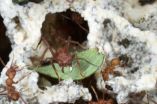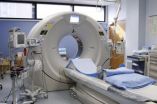(Press-News.org) PROVIDENCE, R.I. [Brown University] — Research results from the National Lung Screening Trial, published online June 29 in the New England Journal of Medicine confirm that helical low-dose CT (LDCT) scans for lung cancer reduce deaths in heavy smokers by 20 percent compared to X-ray scans, but several other key findings from the data gathered in the study, including cost-effectiveness, will be released in the next six months, said a Brown University statistician who helped lead the massive government-funded study.
"The results of the study say that the time has come for considering LDCT screening for lung cancer," said Constantine Gatsonis, one of the two leading statisticians in the NLST and chair of biostatistics in the public health program of the Warren Alpert Medical School of Brown University. "For the first time we have a study that says, 'Yes, you can actually reduce lung cancer mortality in heavy smokers via screening.' This is tremendous."
The need for further analysis is significant because screening is only one procedure in a much broader health care process, said Ilana Gareen, assistant professor of epidemiology in Brown's Center for Statistical Sciences and a co-author of the paper. She and Gatsonis noted that LDCT scans have a high false-positive rate that can lead to follow-up screens and biopsies even when there is ultimately no cancer. After three rounds of annual screening with LDCT, for example, 39.1 percent of participants had at least one screen result that was positive for lung cancer. The vast majority of such findings were false alarms.
"The impact of LDCT screening on lung cancer mortality cannot be considered in isolation," Gareen said. "The screening and subsequent diagnostic work-up will also impact patients' emotional and physical health and will result in increased levels of health care utilization that may tax an already over-burdened health care system. To provide information for patients and decision makers, we are studying these downstream consequences."
Deeper analyses underway
Researchers at Brown, Dartmouth, and the National Cancer Institute are building statistical simulation models that will allow them to predict the effects of screening in populations beyond the 53,454 people studied in the NLST, said Gatsonis, whose work in the study was conducted in association with the American College of Radiology Imaging Network (ACRIN) where Gatsonis is director of the Biostatistics and Data Management Center. The study focused on people aged 55 to 74 who smoked for at least 30 "pack years" (i.e., a pack a day for 30 years or two packs a day for 15 years).
The models may also be able to provide health officials with guidance on whether people would still benefit if they were screened every other year instead of annually.
Gatsonis's group at Brown and ACRIN, which includes four authors of the New England Journal of Medicine paper, expects to publish analyses of three other aspects of the data over the next six months: differences in post-screening smoking behavior between patients who received X-ray and helical LDCT scans; differences in utilization of health care between the two groups; and, under the leadership of Dr. William Black at Dartmouth, the cost-effectiveness of helical LDCT scans versus X-rays.
The New England Journal of Medicine paper's authors said the cost-effectiveness analysis is vital to formulating a recommendation for patient care or insurance reimbursement.
"Before crafting public policy recommendations, the cost-effectiveness of helical LDCT screening must be rigorously analyzed," they wrote. "Against the reduction in lung cancer mortality, the harms from false positive screening results and overdiagnosis and costs must also be weighed."
###
The study's Brown University authors, in addition to Gatsonis and Gareen, are Amanda Adams and JoRean Sicks.
The research was funded by the National Cancer Institute.
Study confirms CT lung cancer screens save lives; other analyses underway
2011-06-30
ELSE PRESS RELEASES FROM THIS DATE:
Scientists use 'optogenetics' to control reward-seeking behavior
2011-06-30
(Embargoed) CHAPEL HILL, N.C. – Using a combination of genetic engineering and laser technology, researchers at the University of North Carolina at Chapel Hill have manipulated brain wiring responsible for reward-seeking behaviors, such as drug addiction. The work, conducted in rodent models, is the first to directly demonstrate the role of these specific connections in controlling behavior.
The UNC study, published online on June 29, 2011, by the journal Nature, uses a cutting-edge technique called "optogenetics" to tweak the microcircuitry of the brain and then assess ...
Scientists shed light on the private lives of electrons
2011-06-30
A Princeton researcher and his international collaborators have used lasers to peek into the complex relationship between a single electron and its environment, a breakthrough that could aid the development of quantum computers.
The technique reveals how an isolated electron and its surroundings develop a relationship known as a Kondo state – a state of matter that is of great interest to physicists and engineers. The results not only yield insights into a long-standing quandary in theoretical physics, but also may help scientists understand how to store information at ...
At-HomeMedSpa.com Announces Addition of "La Roche-Posay" Brand to Their Online Product Catalog
2011-06-30
www.At-HomeMedSpa.com has announced the addition of the La-Roche-Posay line, to their online store. La Roche-Posay is famous for using thermal spring water rich in selenium. La Roche-Posay is an internationally known line of skincare sold all over Europe, Asia, Latin America, and now it is available at At-HomeMedSpa in the United States! The unique thermal spring water comes from a small village in central France called La Roche-Posay, which is where the brand's name is derived from.
La Roche-Posay Thermal Spring Water is the result of rainwater flowing over vast expanses ...
Fungus farming ant genome reveals insight into adaptation of social behavior
2011-06-30
June 30, 2011 – The development of agriculture was a significant event in human cultural evolution, but we are not the only organisms to have adopted an agricultural way of life. In a study published online today in Genome Research (www.genome.org), researchers have sequenced the genome of a fungus farming leaf-cutting ant, revealing new insights into the genetics and molecular biology behind this unusual lifestyle.
Found in Central and South America as well as the southern United States, leaf-cutting ants have evolved a symbiotic relationship with fungus. By breaking ...
Study shows 20 percent reduction in lung cancer mortality with low-dose CT vs chest X-ray
2011-06-30
Scientists have found a 20 percent reduction in deaths from lung cancer among current or former heavy smokers who were screened with low-dose helical computed tomography (CT) versus those screened by chest X-ray. The primary research results from the National Lung Screening Trial (NLST) were published online today in the New England Journal of Medicine.
This article provides a more extensive analysis of the data originally reported in November 2010 while providing additional data to the public and research community without barriers to access. Sponsored by the National ...
Joe Jedlowski Makes Significant Donation to Alzheimer's Association
2011-06-30
Joe Jedlowski is pleased to announce a significant donation made to the Alzheimer's Association. This donation will help in many aspects when it comes to research and treatment of this detrimental disease. Joe Jedlowski, who is a prominent executive throughout the senior living field, has firsthand knowledge of the effects that Alzheimers has on individuals and their families.
As Regional Vice President of Atria Senior Living Group, Joe was affiliated with many influential groups and organizations within the New Jersey community. In addition to monetary donations, he ...
The Cancer Genome Atlas completes detailed ovarian cancer analysis
2011-06-30
An analysis of genomic changes in ovarian cancer has provided the most comprehensive and integrated view of cancer genes for any cancer type to date. Ovarian serous adenocarcinoma tumors from 500 patients were examined by The Cancer Genome Atlas (TCGA) Research Network and analyses are reported in the June 30, 2011, issue of Nature.
Serous adenocarcinoma is the most prevalent form of ovarian cancer, accounting for about 85 percent of all ovarian cancer deaths. TCGA researchers completed whole-exome sequencing, which examines the protein-coding regions of the genome, ...
Mr. Dimitri Snowden Announces the Launch of His Personal New Website
2011-06-30
Dimitri Snowden announces the launch of his new website, www.DimitriSnowden.com. The site will be a virtual hub, showcasing Dimitri's online activities and linking his business and personal pursuits in one easy to find location. The new website details Dimitri Snowden's passion for mixed martial arts (MMA), robotics, racing, the environment, and his strategic consulting firm, ion360. The consulting firm specializes in delivering compelling outcomes using clever strategy and smart technology platforms.
The newly-launched website states that Dimitri Snowden, within the ...
Lung cancer screening trial shows screening with CT scans reduces lung cancer deaths
2011-06-30
Philadelphia — Results of the National Lung Screening Trial (NLST) published online in the June 30 New England Journal of Medicine report a twenty percent reduction in lung cancer deaths among study participants who were screened with low-dose helical computed tomography (CT) versus those screened with chest X-ray. Conducted by the American College of Radiology Imaging Network (ACRIN) and the National Cancer Institute's Lung Screening Study Group, the NLST enrolled 53,000 current and former heavy smokers aged 55 to 74 at 33 sites across the United States.
Lung cancer ...
UCSF-led team decodes evolution of skin and ovarian cancer cells
2011-06-30
A team of researchers led by scientists at the University of California, San Francisco has developed a way to uncover the evolution of human cancer cells, determining the order in which mutations emerge in them as they wend their way from a normal, healthy state into invasive, malignant masses.
The work may give doctors a new way to design diagnostics for detecting the signs of early cancers, when they are generally more treatable than in their later stages.
This approach relies on teasing apart the DNA of cancer cells, and it is something like genetic archeology. ...




